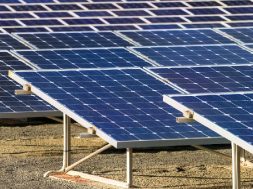
UP becomes lab for green energy firms looking to tap rural market
Uttar Pradesh, home to about 16% of India’s 1.2 billion population, many of whom have poor or no access to power, is emerging as the preferred testing ground for non-profits and companies trying out new business models as they seek to tap rising demand for electricity in rural India.Across the state, these organizations are testing the viability of supplying electricity from mini-grids and solar-powered lighting systems specially designed for villages and small enterprises.
The first customers are telcos whose telecom towers in remote parts of the country have, until now, been powered by diesel generators; and shops, even individual households, in villages that were hitherto illuminated by kerosene lanterns.According to Zia Khan, vice-president, initiatives and strategy at the Rockefeller Foundation, which has committed $75 million of debt financing and early investment capital to energy services companies in India, the market for mini-grids in Uttar Pradesh is promising.“More consumers are signing up, no one has dropped out of the mini-grid ecosystem and more energy service companies are coming up,” said Khan.
The foundation provides finance for setting up micro-grids, helps these utilities in finding anchor customers (mostly telcos), and in marketing power to households and small commercial establishments.About seven utilities that the foundation has financed have so far set up close to 100 grids in Uttar Pradesh and Bihar. By 2018, they will connect around 1,000 villages.For customers, the lure of renewable energy from micro-grids is in the cost.According to Sunil Jain, chief executive officer of Hero Future Energies Pvt. Ltd, the cost of power from a diesel generator set comes to about Rs.22 a unit for telcos, which require higher capacity generators.
“Cost of solar power with adequate storage facility comes to not more than Rs.14-15 a unit. Innovation in solar power and storage facilities could further drive down the cost of off-grid power in the next few years and revolutionize the electricity sector,” said Jain, who is convinced that India’s mobile telephony story (in which competition, technology and enabling regulation combined to drive tariffs to the lowest in the world) could be repeated in energy.For the non-profits and companies, Uttar Pradesh is a good testing ground for models they can apply elsewhere, in the country, and without—in other parts of Asia and in Africa.
According to the International Energy Agency’s World Energy Outlook 2015 report, India has 237 million people with no access to electricity. In many villages, power supply is intermittent.According to executives in power companies, 70% of those without access to electricity or with intermittent access to it are in Uttar Pradesh, Bihar and Jharkhand.In parts of Uttar Pradesh, where solar power is available to households and shops, consumption of electricity is growing steadily on the back of affordable solar-powered gadgets such as lanterns, mobile phone chargers and fans, even entire power systems suitable for a shop. To capture the market, solar gadget makers are tailor-making products for the rural consumer.
According to Nidhi Modi, executive director, RAL Consumer Products Ltd, which has so far sold 2.5 million solar lanterns in villages, a customer can recover the cost of a lantern in about four months from the savings made on the use of kerosene. A solar lantern providing 6-8 hours of uninterrupted lighting costs Rs.695, while kerosene costs a family Rs.150 a month.Most consumers in rural areas can and will pay, says Modi. Her company designs solar-powered products based on expected hours of use, energy consumption and consumers’ ability to pay. “Then we arrange for loans for buyers from microfinance institutions without any collateral,” says Modi.
Encouraged by the response, RAL Consumer Products is preparing to sell these lanterns designed in India, but made in China, in similar markets in Asia, Africa and Latin America.According to Jaideep Mukherji, CEO, Smart Power India, an entity established by the Rockefeller Foundation, the viability of a grid is determined by the number of households, shops and availability of an anchor customer that will buy about 25-30% of the power generated.He said a two-room household that uses kerosene worth about Rs.180-250 a month could have a solar lighting and mobile charging facility for about Rs.110 a month. “Based on the wealth of experience in villages in India, we are looking forward to similar operations in other countries, too,” said Mukherji.
Zia Khan said the social impact of affordable renewable energy power is of immense importance to The Rockefeller Foundation. “Students are able to study for longer hours, women feel safer and micro enterprises stay open for more time,” Khan said.In June, the central government set a target of installing at least 10,000 mini-grids, generating 500MW of power in five years and serving rural India.















